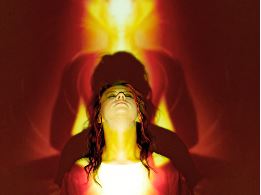
When I first started my path to becoming a Reiki practitioner, I didn’t know much about the levels of Reiki and what they meant. I think having an open mind and going in with it helped me in some ways. However knowing a little bit about the levels of Reiki will help you to understand Reiki better and find the right master.
Importance of the levels of Reiki
Every Reiki master teaches each level slightly differently, despite the fact that the basics of Reiki are universal. A master might teach you in different formats of either three or four levels of Reiki. Each level has involves “attunement”, knowledge, and practice.
What is Attunement?
The attunement sets Reiki apart from other energy healing modalities.
The reiki master conducts this ritual, known in Japanese as Reiju (Ray-joo), during each level to widen and open the student’s body’s primary energy channels and enable universal energy, also called Qi, Chi, or Ki, to flow freely through them.
It removes blockages from the body cause significant change in energy levels.
Following their attunements, practitioners will experience a period of significant self-growth. The attunement procedure can be compared to an energy transfer where the student receives energy from the master and keeps it for the rest of their lives.
These trainings are typically held over the course of a weekend, but some masters carry them out even for weeks or months.
The Reiki Master (third level) degree is more difficult and often takes months to finish.
Understanding the levels of Reiki:
Level 1: Shoden
A practitioner’s introduction to Reiki is at Level 1. The primary goal of Level 1 is to open the energy channels so that the practitioner can access the universal life force energy and accumulate it in the hands.
The goal of Level 1 certification is self-Reiki, which means focusing on how we can use Reiki on ourselves. A history of Reiki is typically included in the Level 1 course as well.
The attunement for Level 1 is generally given by Reiki masters in one session, though some give up to four different attunements.
Your palms may feel excessively warm or cold after the first attunement. You may also experience anxiety, fatigue, grief, or a surge of energy!
Some Reiki masters advise waiting at least 21 days or a full month before getting the Level 2 attunements.
Level 2: Okuden.
In this level, the students learn how to widen their energy pathways and how to give Reiki to others.
During this stage, they learn about symbols and how to use them. These symbols depict different types of energy (distance, power, harmony, and mastery). Students can then use these symbols to incorporate Reiki into their daily lives and heal others at a distance.
During the Level 2 attunement, the heart chakra, which is the centre of the spiritual and physical chakras, is opened normally in a single attunement.
You are expected to practice for at least two months before Level 3 (master) training.
Level 3 (Reiki Master): Shinpiden
Traditionally, the Reiki Master Level is the teacher’s level, which enables the practitioners to attune others. Being a Reiki master requires a great deal of dedication to the practice. Therefore, some instructors add another level to make a distinction between Reiki Master and Level 3. In this case the gap between the levels of Reiki gives the practitioners the confidence to attune others correctly.
The Master Level should preferably be done under the same Reiki master who attuned you to levels 2 and/or 3, as it is taught differently by all. As a result, you should think carefully before choosing a master.

